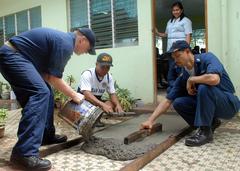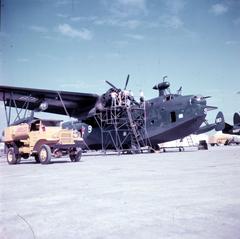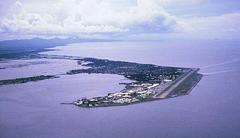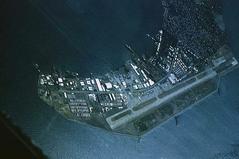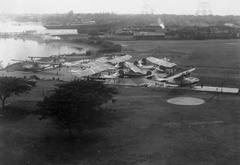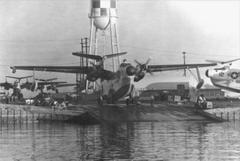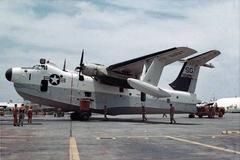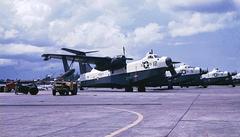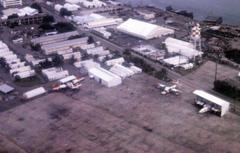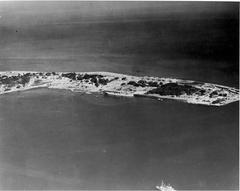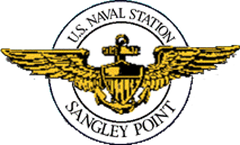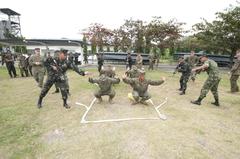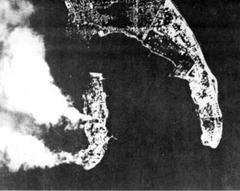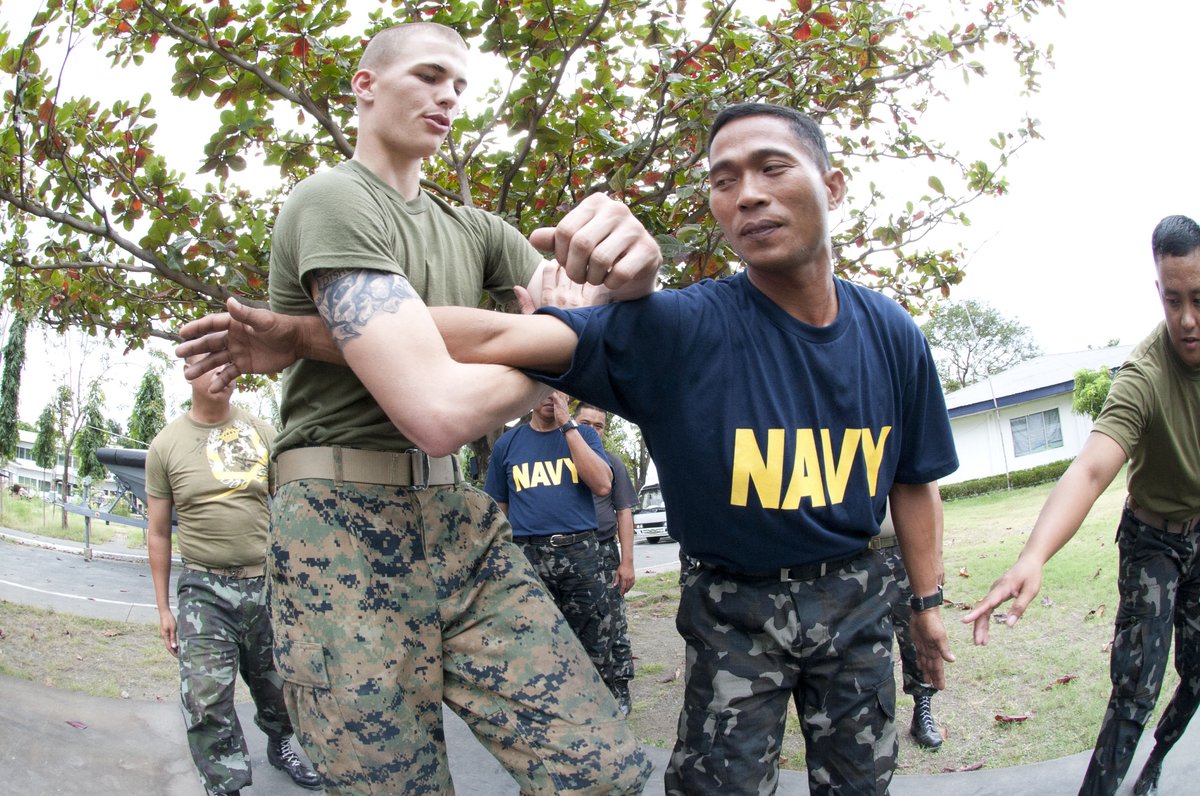
Naval Station Sangley Point Visiting Hours, Tickets, and Comprehensive Guide to Cavite City Historical Sites
Date: 15/06/2025
Introduction
Naval Station Sangley Point, situated in Cavite City, Philippines, is a location of immense historical and strategic value. From its beginnings as a Spanish naval arsenal in the 16th century, through its transformation under American and Japanese occupation, and now as a vital Philippine military base, Sangley Point has played a crucial role in the defense and development of Manila Bay and the broader region. Its name, derived from the Chinese “sangleys,” highlights its multicultural legacy as a hub for trade and interaction.
While the base is still an active military installation with limited public access, its storied past and proximity to significant Cavite City attractions make it a compelling destination for history enthusiasts and travelers. This guide provides a detailed exploration of Sangley Point’s historical evolution, practical visitor information—including visiting hours, ticketing, and guided tours—and recommendations for nearby attractions. It also outlines the ongoing development of Sangley Point International Airport, which will further shape the area’s future accessibility and tourism potential.
Whether your interest is rooted in colonial history, military heritage, or travel planning, this resource synthesizes insights from authoritative sources such as the Naval History and Heritage Command, Cavite Provincial Government, and Philippine News Agency.
Table of Contents
- Introduction
- Historical Overview
- Visiting Naval Station Sangley Point
- Nearby Attractions in Cavite City
- Visual Gallery and Photographic Tips
- Frequently Asked Questions (FAQ)
- Modern Developments and Future Prospects
- Preservation and Cultural Heritage
- Conclusion and Call to Action
- References
Historical Overview
Spanish Colonial Era and the Birth of Sangley Point
Sangley Point’s origins are deeply rooted in the Spanish colonial period. After the Spanish conquest of Manila in 1571, the Cavite peninsula was fortified to secure Manila Bay. It soon became the main naval arsenal and shipyard of the Spanish colonial government, supporting the famed Manila galleon trade. The area was named after the “sangleys,” Chinese merchants who were restricted from Manila proper but conducted thriving trade here, which contributed to the multicultural fabric of Cavite (Cavite Provincial Government).
By the 19th century, Sangley Point had expanded to include shipbuilding facilities, arsenals, and hospitals, cementing its status as the command center of Spanish naval operations in the Philippines (Naval History and Heritage Command).
American and Japanese Occupation
Following Spain’s defeat in the Battle of Manila Bay (1898), the Americans took over Sangley Point, modernizing and expanding its capabilities. It became a logistical and repair hub for the U.S. Asiatic Fleet and later housed radio stations and aviation facilities (Naval History and Heritage Command).
During World War II, Sangley Point was heavily bombed and occupied by Japanese forces, who used it to support naval operations in the region. After liberation, the U.S. Navy rebuilt the base, adding a long runway and expanded seaplane facilities (Cavite Provincial Government; Naval History and Heritage Command).
Cold War and Vietnam War Era
Sangley Point was redesignated as a Naval Air Station in the late 1940s and became a critical base for reconnaissance, antisubmarine, and logistical operations during the Cold War. It hosted patrol squadrons and played a significant support role during the Vietnam War, with extensive aviation infrastructure including runways, seaplane ramps, and fuel storage (Naval History and Heritage Command; wikiwand.com).
Transition to Philippine Control
In 1971, Sangley Point was officially transferred to the Philippine government. The Philippine Navy and Air Force now occupy and operate the base, which continues to serve as a key repair, logistics, and air operations site (Cavite Provincial Government; Philippine News Agency).
Visiting Naval Station Sangley Point
Visiting Hours and Ticket Information
- Public Access: As an active military base, Sangley Point is not open to the general public for regular visits. Tours or access may be granted for special events, educational tours, or with prior authorization through the Philippine Navy or local tourism offices.
- Airport Terminal: The Sangley Point Airport terminal is open daily from 5:00 AM to 10:00 PM for travelers with valid flight tickets.
- Fort San Felipe and Other Sites: Access to Fort San Felipe and other heritage sites within the complex requires advance coordination with the Philippine Navy. There are currently no standard entrance fees, but arrangements may vary for official or guided tours (Cavite Provincial Government; touristplaces.guide).
Accessibility and Travel Tips
- Getting There: Sangley Point is about 25 km south of Manila. Reach it via Roxas Boulevard and CAVITEX by car, taxi, or public transport to Cavite City. Ferry services from Manila are available intermittently.
- Transport: Public transport is limited; private vehicles or ride-hailing apps are recommended.
- Best Time to Visit: The dry season (November to April) offers the best weather for sightseeing and exploring nearby attractions.
Security and Visitor Conduct
- Carry a valid government-issued ID and expect security screening at entry points.
- Photography of military installations and personnel is strictly controlled; always seek permission before taking photos inside the base.
- Modest attire and respectful conduct are advised.
Guided Tours and Special Events
- Guided tours for educational or research purposes are available by special arrangement with the Philippine Navy Public Affairs Office.
- The base occasionally opens for commemorative events or heritage celebrations—monitor official announcements for opportunities (Philippine Navy).
Nearby Attractions in Cavite City
While direct access to the main base is limited, Cavite City offers several historical and cultural sites:
- Fort San Felipe: A Spanish fortress with a museum of military relics. Access requires prior arrangement.
- Old Spanish Slipway: A heritage site reflecting Cavite’s shipbuilding legacy.
- Cavite City Library Museum: Showcases local history from the Spanish, American, and Japanese periods.
- Diocesan Shrine of Our Lady of Solitude of Porta Vaga: A significant religious and cultural landmark.
- Corregidor Island: Accessible by ferry, known for its World War II history.
Nearby, restaurants such as Sangley Point Bar and Grill, Trojans Cafe, and Canteen Ni MAMA provide convenient dining options (Crown Asia).
Visual Gallery and Photographic Tips
- Photo Opportunities: Capture panoramic views of Manila Bay, the Cavite coastline, and historical structures at sunrise or sunset for the best lighting.
- Promenades: Public areas like Muralla Bayfront are ideal for scenic photography.
- Note: Always respect restrictions regarding photography of military areas.
Alt Text Example: “Aerial view of Sangley Point with Manila Bay and Cavite City in the background.”
Frequently Asked Questions (FAQ)
Q: Can the public visit Naval Station Sangley Point?
A: Public access is restricted. Entry is only possible via official tours, special events, or with prior authorization.
Q: Is there an entrance fee or tickets required?
A: No standard ticketing is in place. Guided tours or special event participation may involve arrangements through the Navy or local tourism offices.
Q: What are the best historical sites near Sangley Point?
A: Fort San Felipe, Cavite City Museum, Old Spanish Slipway, and Corregidor Island.
Q: How do I reach Sangley Point from Manila?
A: By car via CAVITEX, by intermittent ferry service (check schedules), or by domestic flight to Sangley Point Airport.
Q: Are guided tours available?
A: Yes, but only via advance coordination and approval.
Modern Developments and Future Prospects
The Sangley Point International Airport (SPIA) project will transform the area into a major international gateway, with plans for reclaimed land, multiple runways, and expanded terminal capacity (Inquirer; Centre for Aviation). While this promises economic growth and improved accessibility, it also poses challenges for military operations and heritage preservation. Ongoing discussions aim to balance security, economic, and cultural interests (Philippine News Agency).
Preservation and Cultural Heritage
Advocates urge the integration of heritage conservation into the airport’s development, including the preservation of Fort San Felipe and the establishment of museums or interpretive centers within the complex (Cavite Province). Sangley Point stands as a symbol of Cavite’s resilience and its role as the “Historical Capital of the Philippines” (hopncruise.com).
Conclusion and Call to Action
Naval Station Sangley Point is a testament to the Philippines’ rich maritime and military history, now poised for a future of expanded connectivity and development. While public access is limited, the area’s story can be experienced through nearby historical sites and planned heritage initiatives.
For updated information, download the Audiala app, follow official channels, and explore Cavite’s many landmarks. By staying informed and respecting local protocols, your visit will be both enjoyable and meaningful.
References
- Naval History and Heritage Command – Philippine Bases, 2024
- Cavite Provincial Government – Tourism, 2017
- Philippine News Agency – Naval Base Cavite Complex Update, 2024
- Inquirer Business – Sangley Point Airport Project, 2023
- Centre for Aviation – Sangley Point Airport Analysis, 2024
- Cavite Provincial Government – Historical and Tourism Information, 2018
- Wikiwand – Naval Station Sangley Point, 2023
- Tourist Places Guide – Noveleta and Cavite Attractions, 2024
- Crown Asia Lifestyle Blog – Cavite Historical Sites, 2024
- Hopncruise – Cavite City Tourist Spots, 2023

